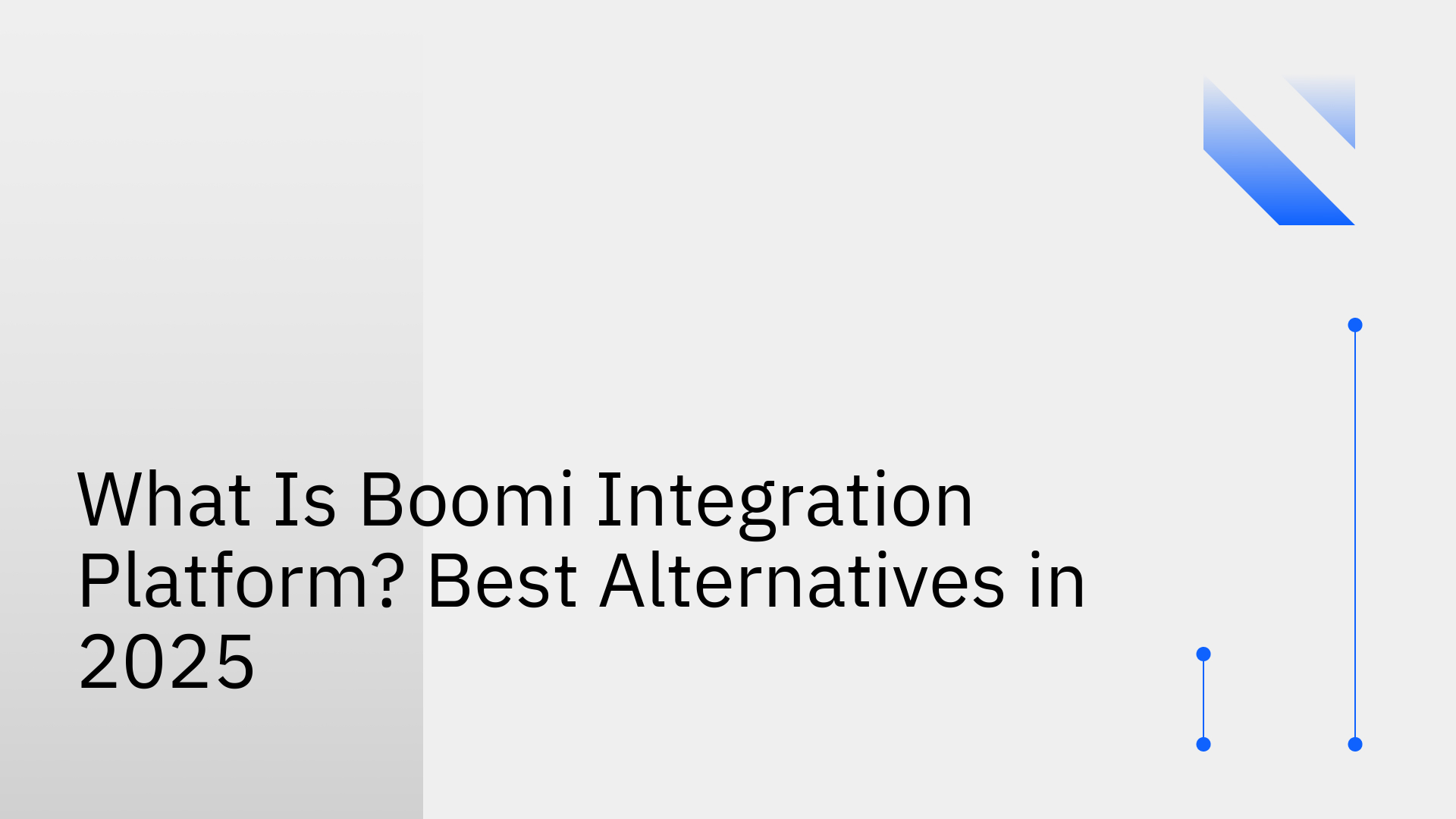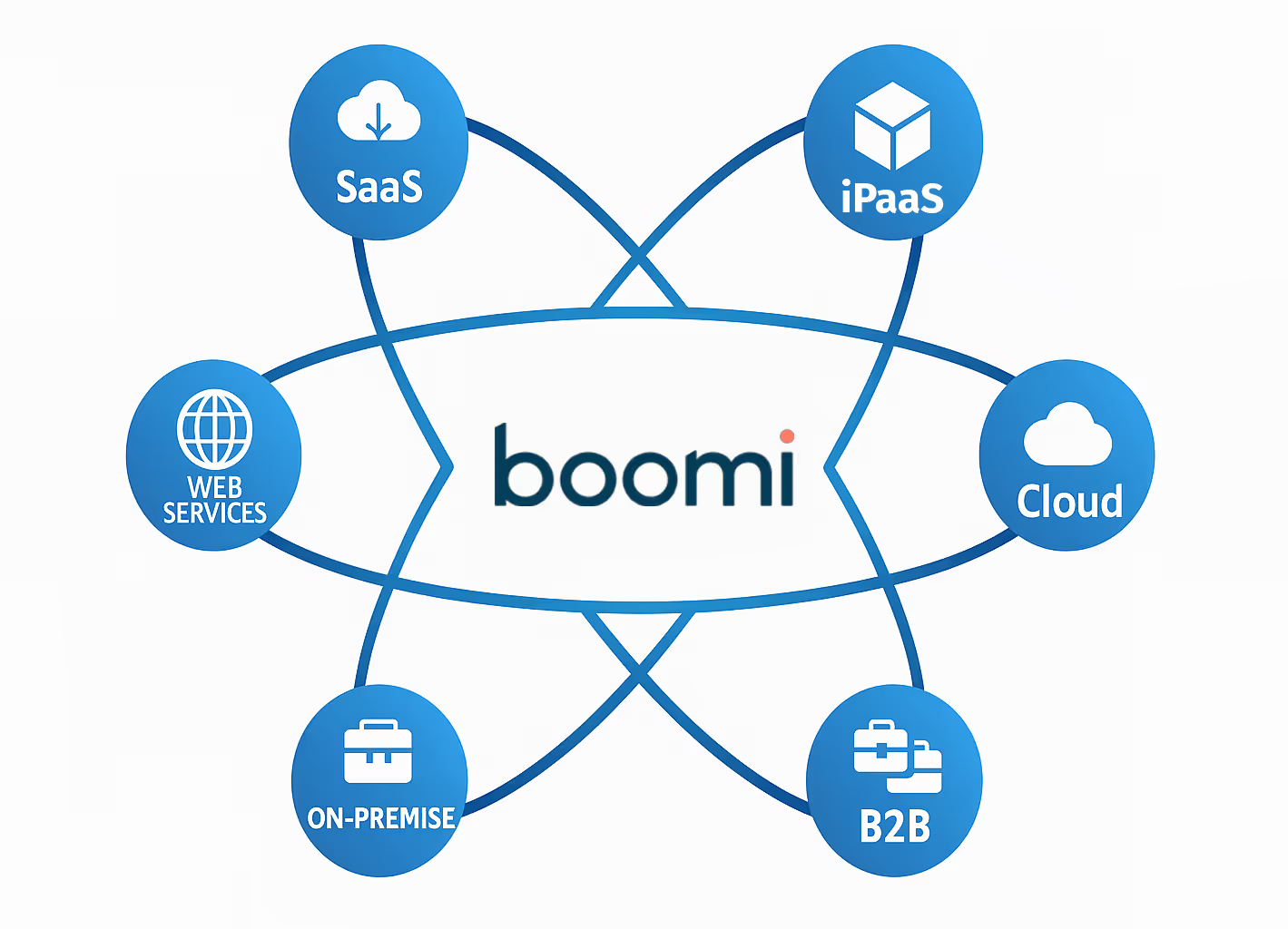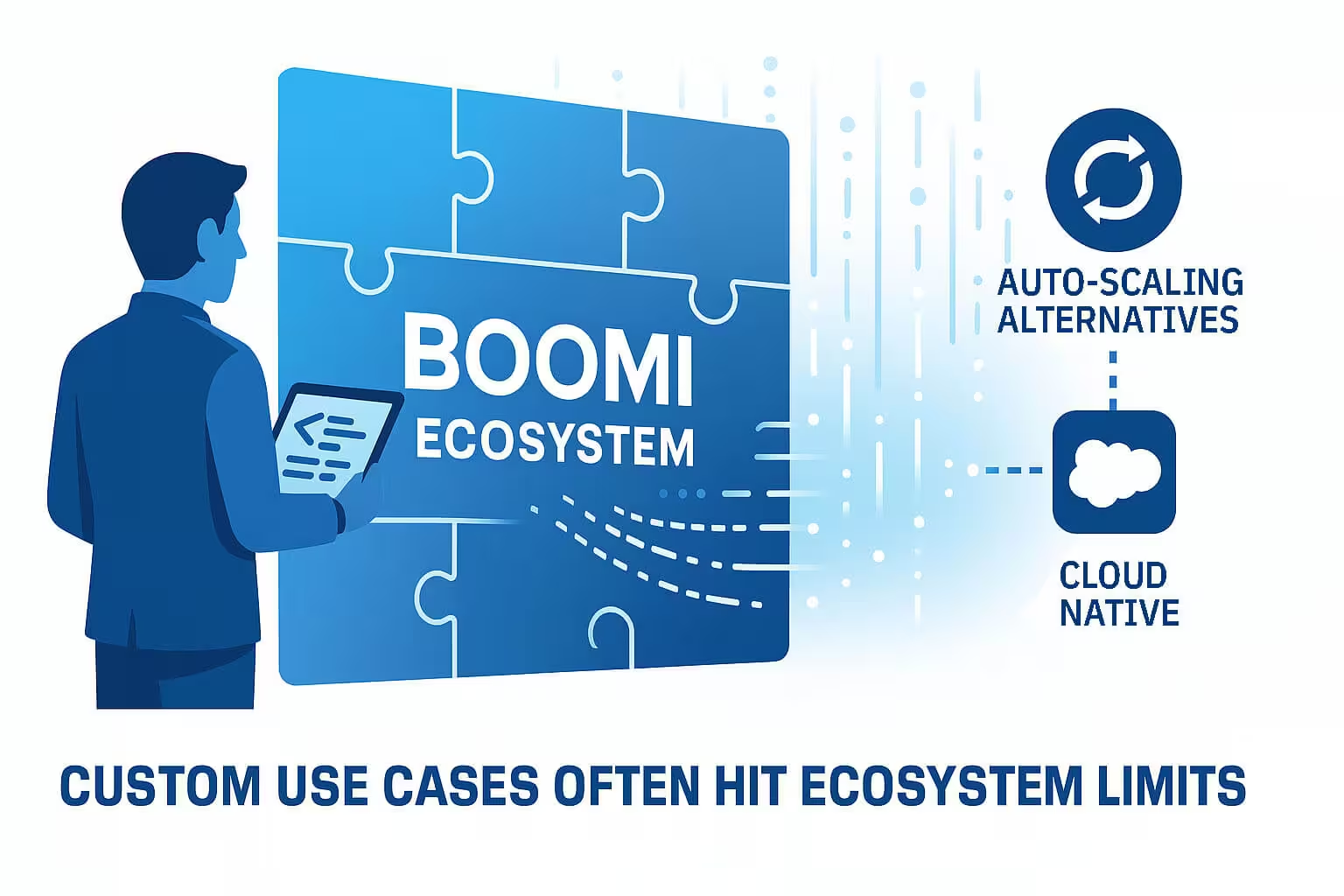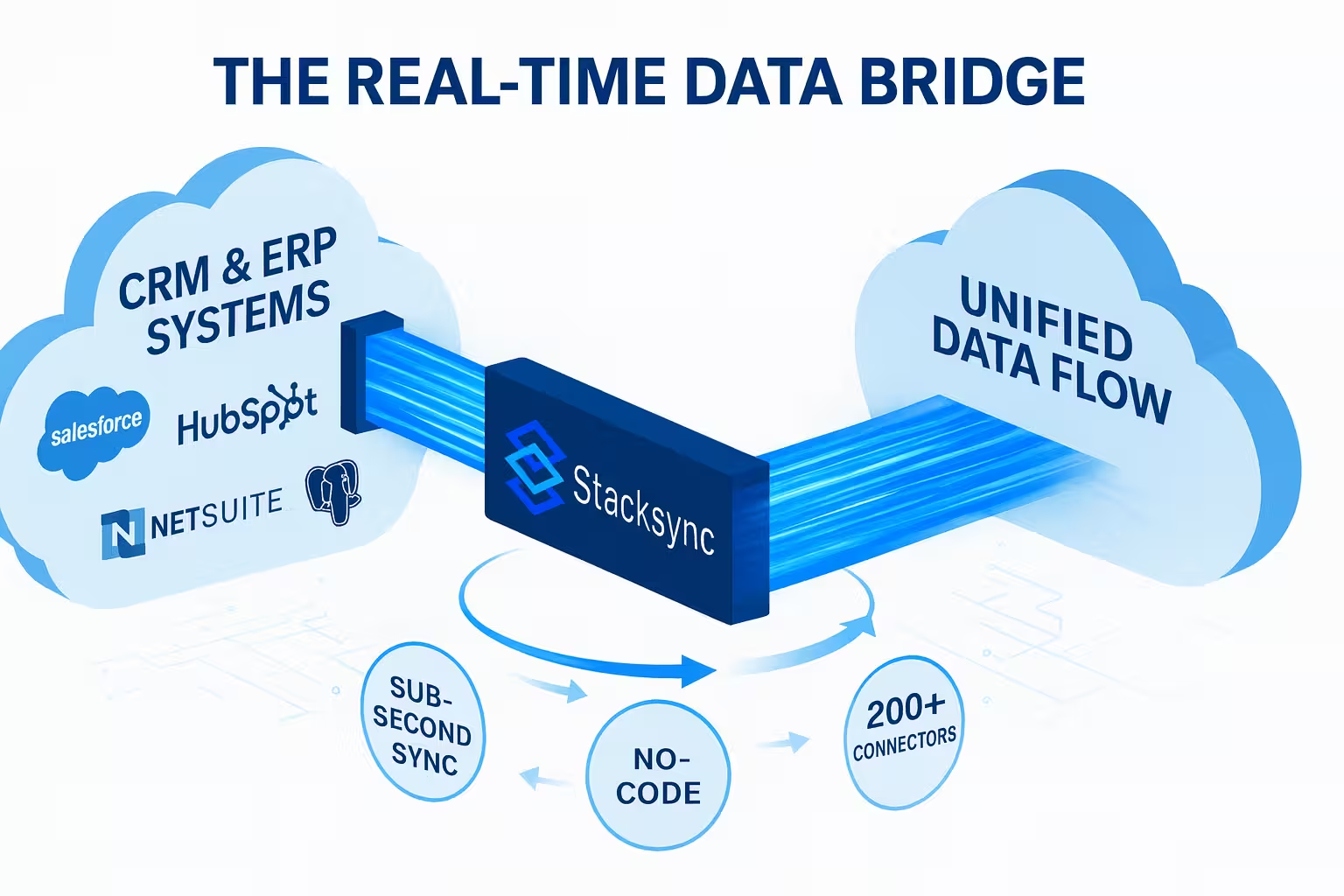
If you’ve been researching enterprise data integration, you’ve likely asked: “What is Boomi?” Known as one of the leading iPaaS (Integration Platform as a Service) tools, Boomi helps businesses connect applications, data, and systems. Yet, many organizations are now searching for a Boomi integration platform alternative that offers faster, real-time synchronization and lower operational overhead.
This guide explains what Boomi integration is, why teams look for alternatives, and what the best modern solutions are in 2025.

Boomi is a cloud-based integration platform founded in 2000 and acquired by Dell Technologies in 2010. It enables businesses to connect on-premises and cloud systems, automate workflows, and manage data consistency across multiple applications.
The core product, Boomi AtomSphere, provides a suite of tools for ETL, API management, B2B/EDI, and master data management.

In short, Boomi integration simplifies complex data movement and system connectivity. However, it comes with trade-offs that are driving modern teams to explore more efficient options.
While Boomi integration remains a trusted enterprise solution, it’s not always the best fit for every organization. Common pain points include:
Boomi pricing is connector-based, with costs increasing as data volumes grow. For companies managing multiple integrations, total ownership costs can easily exceed $50K annually.
Despite being low-code, mastering Boomi integration workflows requires technical experience. Continuous maintenance and updates consume valuable engineering time.
Boomi primarily operates on batch-based synchronization. For organizations needing real-time, bi-directional sync, latency becomes a serious limitation.
The difference between batch vs real-time integration is well explained by GigaSpaces.
And RudderStack covers the benefits real-time integration brings over batch approaches.

Unique use cases often require scripting or workarounds. While Boomi’s ecosystem is large, it’s not always flexible enough for niche integrations or custom data models.
Handling millions of records can introduce sync delays or failures. Mid-market organizations increasingly prefer cloud-native, auto-scaling alternatives designed for modern architectures.
When comparing Boomi integration platform alternatives, focus on the following criteria:
Does the platform offer true bi-directional sync and sub-second data propagation? Traditional iPaaS tools like Boomi, MuleSoft, and Informatica often rely on batch updates, while newer tools emphasize real-time event streaming.
A good breakdown of real-time vs. batch integration is covered by IBM.
Look for solutions supporting both standard and custom fields across CRMs, ERPs, and databases. A strong connector library (200+ integrations) minimizes setup time.
Choose vendors with SOC 2, GDPR, HIPAA, and ISO 27001 certifications. Enterprise integration often involves sensitive data that demands regulatory-grade protection.
Factor in hidden costs: development time, maintenance, error handling, and infrastructure. Managed solutions often lower TCO by removing operational overhead.
Modern platforms provide monitoring dashboards, rollback options, and conflict resolution to keep synchronization reliable and auditable.
The integration landscape has evolved rapidly. Here are the most prominent Boomi integration alternatives categorized by their strengths and use cases.

Designed for real-time, two-way synchronization between systems like Salesforce, HubSpot, NetSuite, and Postgres. Unlike Boomi integration or ETL tools, Stacksync provides:
This makes it ideal for mid-market and enterprise teams that need operational data consistency across CRMs, ERPs, and databases without heavy IT dependency.
Best for large enterprises that need deep API-led integration. MuleSoft offers an extensive toolkit for API management, but implementation complexity remains high.
Ideal for automation-driven workflows. Workato combines iPaaS functionality with low-code process automation, though its pricing scales quickly.
Known for simplifying cloud app integrations. Strong with NetSuite and mid-market business applications but less suitable for heavy database use cases.
Informatica is a robust data management platform with advanced governance, metadata, and data quality features. Best for enterprises managing large-scale data operations.
Balances API management and low-code workflow creation. Jitterbit excels in usability and compliance, especially for regulated industries.
Offers AI-powered automation with an intuitive drag-and-drop interface. Ideal for companies seeking fast deployment and flexible scaling.
Provides a fully managed, hands-free alternative. ONEiO operates integrations on behalf of clients, ensuring uptime without in-house maintenance.
ONEiO’s blog also speaks to moving beyond traditional iPaaS.

Organizations replacing legacy Boomi integration setups often report 30–50% lower TCO when switching to event-driven or managed synchronization platforms.
Boomi remains a powerful integration platform, but evolving operational demands are pushing teams toward real-time, bi-directional alternatives. Whether you prioritize no-code automation (Workato), managed services (ONEiO), or real-time synchronization (Stacksync), the right choice depends on your business’s data flow and agility needs.
Not entirely. Boomi integration relies on batch processes. For true sub-second sync, platforms like Stacksync or ONEiO are more suitable.
iPaaS connects systems primarily for scheduled data transfers. Real-time sync platforms keep every system updated continuously.
Yes. Migration usually takes 1–3 weeks using automated field mapping and data validation tools.